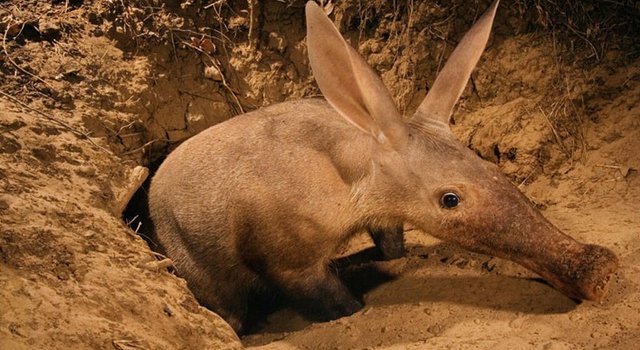THESE ANIMALS ARE TRULY ONE OF A KIND
THERE ARE 350,000 species of beetles—that’s an awful lot of relatives. And yet some animals, like humans, have no fellow species in existence. We’re all alone.
Humans’ closest living relatives, biologically speaking, are chimpanzees, but while humans are classified as Homo sapiens, which puts us in the genus Homo, chimpanzees are in the genus Pan. All the other known members of Homo are long extinct, such as Homo neanderthalensis, better known as Neanderthals.
“Reconstructing the Tree of Life is complicated and can lead to exciting surprises,” says Alex Dornburg of the North Carolina Museum of Natural Sciences. “New information can change our understanding of relationships instantly.” DNA analysis, for example, “has revealed that some animals that were long thought to be closely related actually aren’t, or vice versa.
THE DEMON PRIMATE
According to local legends, the aye-aye is a demon that can kill just by pointing a finger. Not quite... but if you're a grub, its bizarre middle digit can be a deadly weapon.
What’s more, the very definition of a “species” can sometimes be tricky. “Bacteria can pick up genes from their environment,” blurring the lines of their different species, says Isaac Miller-Crews, a PhD student at the University of Texas at Austin.
Even if we took varied routes to get there, what other animals ended up alone in the world? (Related: Did This Mysterious Ape-Human Once Live Alongside Our Ancestors?)
AARDVARK
Aardvarks look like they could be related to many animals, and were once thought to be relatives of anteaters because of their similar food preferences.
In reality, aardvarks (Orycteropus afer) are related to elephants and separated from that family tree about 80 million years ago. The aardvarks we know and love today are the only one of their kind to have survived and to thrive on its native central African grasslands.
Aye-ayes, like this one in Mananara, eastern Madagascar, once had a much larger cousin.
PHOTOGRAPH BY THOMAS MARENT, MINDEN PICTURES/NAT GEO IMAGE COLLECTION
AYE AYE
This nocturnal primate with its big teeth, yellow eyes and Crypt Keeper fingers truly stands alone, but it didn’t always.
The aye-aye lives along the east coast of Madagascar. In 1994, the partially fossilised remains of giant aye-ayes were found much farther south. If you think the ones living today are a “demon primate,” imagine one that’s two to five times bigger than the current four-pounder.
In a perfect example of how new discoveries change animal relationships, in 2018 a newly analysed fossil previously thought to be a bat was found to actually be a primate relative of the aye-aye. The find also suggests the aye-aye probably didn’t come to Madagascar from Africa at the same time lemurs did, as previously thought.
Not only did the aye-aye suddenly get a new relative, but the last time a bat turned into a primate so quickly must have been Dracula.
TUATARA
Tuataras aren’t lizards, despite their looks. They are their own order of reptile, nocturnal and partial to cooler weather.
SEE 10 OF THE RAREST ANIMALS ON EARTH
An Amur leopard named Usi from Nebraska's Omaha Zoo is captured in mid-prowl in this picture by National Geographic photographer Joel Sartore.
PHOTOGRAPH BY JOEL SARTORE
These animals, who walked with the dinosaurs, are a “living fossil, the loneliest species,” little changed for millions of years and with no living relatives, Miler-Crews says.
That doesn’t mean that tuataras haven’t changed at all over time, he says, but there has been little environmental pressure to change much. Tuataras live only in New Zealand and were there when the island broke off from the ancient supercontinent Gondwana, 80 million years ago, Miller-Crews says.
Another tuatara species was thought to inhabit New Zealand’s North Brother Island, but new genetic testing in 2010 showed that it’s the same species, so the tuatara is still the one and only of its kind.
Koalas, native to Australia, are marsupials that are uniquely well-adapted to their environment.
PHOTOGRAPH BY JOEL SARTORE, NAT GEO IMAGE COLLECTION
KOALA
There’s been a debate about whether some of today’s koalas are actually subspecies, but genetic testing has shown the koala we know today is only one floofy, lovable koala species.
Why so unique? In Improbable Destinies: Fate, Chance and the Future of Evolution, Jonathan Losos writes that koalas evolved to suit their diet of eucalyptus leaves, native only in Australia. Their solo status may reflect “the uniqueness of its environment.”
HONEY BADGER
The honey badger is no honey nor is it a badger, though its love of the first and resemblance to the second is how it got its common name. Its actual name is the ratel.
Honey badgers, like this one in Masai Mara, are not actually badgers, but badger relatives.
PHOTOGRAPH BY SUZI ESZTERHAS, MINDEN PICTURES/NAT GEO IMAGE COLLECTION
Honey badgers are related to weasels, skunks, otters and other badgers (all in the Mustelid family), but this fierce African mammal is in a genus by itself. Who would want to tell it otherwise?